Growing the Best Emergency Survival Foods
 In times of uncertainty and unrest, simple things like the price of gas or regional health and safety policies can have a surprisingly far-reaching end result. From supply chain shortages to empty grocery store shelves, the dependence on centralized sources of products has become more and more apparent with recent global events. Many people have started to see the need for the ability to supplement their food supply with more readily accessible avenues.
In times of uncertainty and unrest, simple things like the price of gas or regional health and safety policies can have a surprisingly far-reaching end result. From supply chain shortages to empty grocery store shelves, the dependence on centralized sources of products has become more and more apparent with recent global events. Many people have started to see the need for the ability to supplement their food supply with more readily accessible avenues.
 In World War I, there was the rise of the “Victory Garden”. United States President Woodrow Wilson had appointed Herbert Hoover to the U.S. Food Administration, and in Europe during the first world war, the loss of manpower (to recruitment to the war effort) and farms (by destruction of the land and/or crops) meant that food was in short supply. In order to avoid wartime rationing and help boost both morale and food production, programs were put in place to encourage and educate citizens on how to supplement their own food needs as well as contribute to the war effort with “Victory Gardens”. They were also heavily promoted by the government during WWII from 1943-1945.
In World War I, there was the rise of the “Victory Garden”. United States President Woodrow Wilson had appointed Herbert Hoover to the U.S. Food Administration, and in Europe during the first world war, the loss of manpower (to recruitment to the war effort) and farms (by destruction of the land and/or crops) meant that food was in short supply. In order to avoid wartime rationing and help boost both morale and food production, programs were put in place to encourage and educate citizens on how to supplement their own food needs as well as contribute to the war effort with “Victory Gardens”. They were also heavily promoted by the government during WWII from 1943-1945.
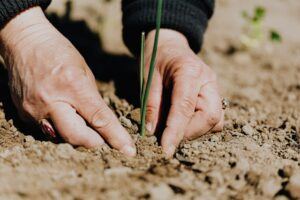 Now, there is a more grass-roots movement being commonly termed, “Survival Gardens”. These are not being heavily promoted by governments, but instead a recognition by the peoples of society that the population has become (perhaps) too dependent on grocery stores and local supermarkets for daily needs.
Now, there is a more grass-roots movement being commonly termed, “Survival Gardens”. These are not being heavily promoted by governments, but instead a recognition by the peoples of society that the population has become (perhaps) too dependent on grocery stores and local supermarkets for daily needs.
Table of Contents
Why Do We Need A Survival Food Garden?
 When supply chain issues arise, the local population often has no alternatives for their food supply. Hence, the resurgence of the gardening and farming movement. With the recent world-wide events, there has been a spotlight on the inter connectivity of the world-wide supply chain. The efficiency of such a system cannot be denied; however, it’s merits have been questioned due to recent events.
When supply chain issues arise, the local population often has no alternatives for their food supply. Hence, the resurgence of the gardening and farming movement. With the recent world-wide events, there has been a spotlight on the inter connectivity of the world-wide supply chain. The efficiency of such a system cannot be denied; however, it’s merits have been questioned due to recent events.
 When grocery store and supermarket shelves are becoming routinely sparse and multiple trips are required to find even one or two of previously easily obtained items, a concern starts to take hold. “What if I can’t get this for several months instead of just a week?” For some items, there is no alternative but to purchase larger amounts or learn about alternatives. When it comes to fresh produce, the answer is more easily provided by a garden at home.
When grocery store and supermarket shelves are becoming routinely sparse and multiple trips are required to find even one or two of previously easily obtained items, a concern starts to take hold. “What if I can’t get this for several months instead of just a week?” For some items, there is no alternative but to purchase larger amounts or learn about alternatives. When it comes to fresh produce, the answer is more easily provided by a garden at home.
The “Easy” That’s Not Easy
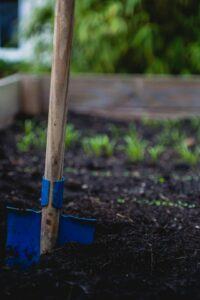 While the solution of fresh produce might be easily thought of by the concept of a backyard survival garden, the thought does not produce the produce. An ideal candidate for survival gardens are going to be “easier” of the plants in many ways. This does not mean there won’t be a good amount of work required. A good survival crop is…
While the solution of fresh produce might be easily thought of by the concept of a backyard survival garden, the thought does not produce the produce. An ideal candidate for survival gardens are going to be “easier” of the plants in many ways. This does not mean there won’t be a good amount of work required. A good survival crop is…
- Easy to grow
- Easy to harvest
- Easy to store with a relatively long shelf life
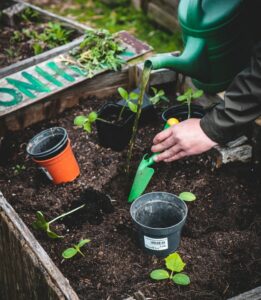 While these “easy” crops will make the hard times less so, getting a new garden planned, set up and flourishing requires many steps and daily work. We are talking about “survival gardens”, after all. Gardening can be made easier, but no matter how easy the crop is, the work of getting out in the garden every day to care for the crop requires dedication, persistence, care and- above all- work.
While these “easy” crops will make the hard times less so, getting a new garden planned, set up and flourishing requires many steps and daily work. We are talking about “survival gardens”, after all. Gardening can be made easier, but no matter how easy the crop is, the work of getting out in the garden every day to care for the crop requires dedication, persistence, care and- above all- work.
Having What’s Important is Key
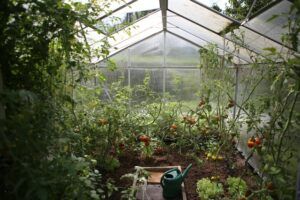 Choosing a survival garden crop is important. While bananas might be a family favorite (something that tastes good, has lots of good vitamins and is eaten several times a week), if the garden is in the far northern reaches of Michigan, the tropical plant will require a greenhouse to grow, and might still not have ideal conditions to put forth fruit. There are a few things that are essential for a good survival crop:
Choosing a survival garden crop is important. While bananas might be a family favorite (something that tastes good, has lots of good vitamins and is eaten several times a week), if the garden is in the far northern reaches of Michigan, the tropical plant will require a greenhouse to grow, and might still not have ideal conditions to put forth fruit. There are a few things that are essential for a good survival crop:
- Grows well is a wider range of climates and/or geographic locations
- Has a high density of nutrition (more nutrients in smaller packages)
- Won’t be difficult to digest or work into meal plans (Taste is not as important as people think it is when they are hungry.)
The Top 10 Best Emergency Survival Foods
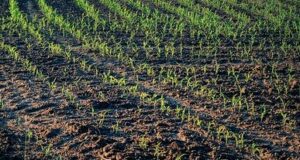 Succession sowing is essential when planting a survival garden. Making sure to stagger the planting dates so there is a much longer and more continual harvest will help keep the menu options varied, nutrition stable and morale high. I have looked into these criteria and while a more comprehensive list of survival garden crops will be provided in a future post, I have narrowed it down to the top 10 best emergency survival foods.
Succession sowing is essential when planting a survival garden. Making sure to stagger the planting dates so there is a much longer and more continual harvest will help keep the menu options varied, nutrition stable and morale high. I have looked into these criteria and while a more comprehensive list of survival garden crops will be provided in a future post, I have narrowed it down to the top 10 best emergency survival foods.
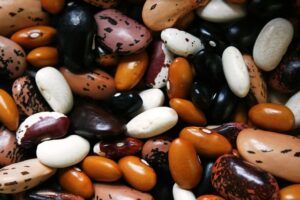 Beans- restores nitrogen to the soil, bush or vine, many varieties.
Beans- restores nitrogen to the soil, bush or vine, many varieties.
- 50-60 day harvest or wait 70-120 days.
- Plant more than you think you’ll need, 10 foot row makes about 1lb of beans. Plant 5-10 per person.
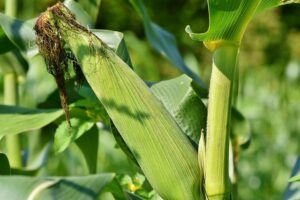 Corn- high density growth, more food in less space.
Corn- high density growth, more food in less space.
- 75-95 day harvest depending on planting time and variety.
- Plant 6-12 per person.
- Squash- huge amount of variety! Summer varieties are
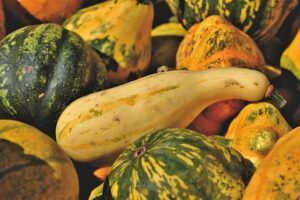 ready faster, winter varieties store for extended periods of time.
ready faster, winter varieties store for extended periods of time.
- Summer: about 50 days depending on variety. Winter: 80-115 days depending on variety.
- Summer squash: plant 2 per person. Winter squash: Plant 4 per person.
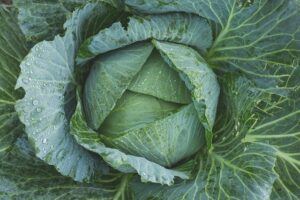 Cabbage- high in essential nutrients and fiber. Good for making long lasing sauerkraut and kimchi.
Cabbage- high in essential nutrients and fiber. Good for making long lasing sauerkraut and kimchi.
- 105-165 days depending on variety and date of sowing.
- Plant 2-4 per person.
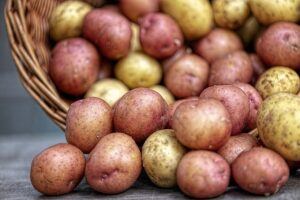 Potatoes- high in calories and filling, with many varieties. They are relatively low maintenance and have many nutrients.
Potatoes- high in calories and filling, with many varieties. They are relatively low maintenance and have many nutrients.
- 45-55 days or when potatoes get to a usable size.
- Plant about 10 per person.
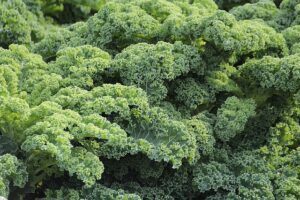 Kale- very cold hearty and get sweeter when exposed to frost. They are more bitter during the heat of summer.
Kale- very cold hearty and get sweeter when exposed to frost. They are more bitter during the heat of summer.
- Baby kale 25-30 days, mature kale, 60 days.
- Plant 3-5 per person.
- Sweet Potatoes- perennial vine (annual in northern
 hardiness zones) that sprawls. Very easy to propagate and packed with essential vitamins and flavor!
hardiness zones) that sprawls. Very easy to propagate and packed with essential vitamins and flavor!
- 90-100 days, do not let sweet potatoes stay in the ground after first frost (rot can spread to the sweet potato from the dying vine.) and harvest carefully (damaged skin during harvest can cause rot when in storage).
- Plant 5 per person.
 Carrots- make sure to plant in loose, well draining soil but can be left in the ground to over-winter (and get sweeter with the cold).
Carrots- make sure to plant in loose, well draining soil but can be left in the ground to over-winter (and get sweeter with the cold).
- Baby carrots are ready in 50-60 days, mature carrots in about 75 days.
- Plant a 10 ft row (10-20) per person.
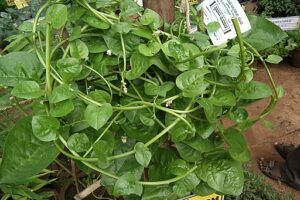 Malabar Spinach- (native to Malabar, India) easy to propagate from cuttings and grown indoors. Climbing veggie vine in full sun and partial shade, can be trained up a trellis. Perennial in warmer climates.
Malabar Spinach- (native to Malabar, India) easy to propagate from cuttings and grown indoors. Climbing veggie vine in full sun and partial shade, can be trained up a trellis. Perennial in warmer climates.
- 70 days, pick leaves while still tender (young) after branching has started.
- Plant 2-4 plants for a family of 4.

- Garlic- very useful as pest repellent, stores very well and has multiple uses in the kitchen and medicinally. (see section below.)
- 90-110 days.
- Plant 10-15 per person.
- *Bonus* Onion- grows high density (more plants in less space) and easily. When stored properly, almost non-
 perishable, and adds so much flavor to foods!
perishable, and adds so much flavor to foods!
- 90-150 days.
- Plant 10-20 per person.
Don’t Forget Medicinal and Multi-Use Crops
 The need for food in a survival garden will always be a predominant factor, but once fed, there are other needs we have. There are many herbs and multi-use crops that can be grown as well. Some herbs not only provide additional flavoring for a dish to be served, but also have time-honored medicinal uses. Others are strictly medicinal, and knowing the difference is important.
The need for food in a survival garden will always be a predominant factor, but once fed, there are other needs we have. There are many herbs and multi-use crops that can be grown as well. Some herbs not only provide additional flavoring for a dish to be served, but also have time-honored medicinal uses. Others are strictly medicinal, and knowing the difference is important.

- Garlic- flavor food, heart conditions, anti-inflammatory and antibiotic.
- Chamomile- makes wonderful tea, hay fever, inflammation, muscle spasms, insomnia, ulcers, wounds, gastrointestinal disorders, rheumatic pain, and hemorrhoids
- Echinacea or Purple Coneflower- very common and delicious tea, natural antibiotic, immune support.
- Ginger- common flavorful food additive, nausea and vomiting, menstrual cramps, migraines, osteoarthritis.
- Turmeric- common flavorful food additive, strengthening bodies’ energy, gas, worms, improve digestion, anti-inflammatory.
- Calendula, Pot Marigold- skin conditions, lymphatic stimulation, and gastrointestinal issues.
- Motherwort- anxiety, lessening pain, hormonal induced irritability, patience.
- Passionvine- sleep aide, pain reliever, lower blood pressure, anxiety and depression.
- Meadowsweet, Queen of the Meadow- inflammation, fevers, heartburn, anti-inflammatory.
There are also crops like the Moringa Tree that provide many resources. A perennial that produces oil, wood, paper, liquid fuel, having medicinal properties as well as the pods, leaves and seeds all being edible; the Moringa tree is a survivalist powerhouse.
A Survival Garden is a Good Idea All the Time
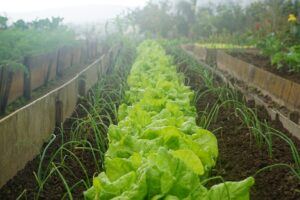 Even if times are good and there are no wars, health scares or unrest in your local area, having the knowledge and practical know-how on the basics of gardening are always a good idea. When times do take a turn, the experience will be invaluable. So even if a full-scale kitchen garden isn’t an option right now, getting a little practice is better than having none at all.
Even if times are good and there are no wars, health scares or unrest in your local area, having the knowledge and practical know-how on the basics of gardening are always a good idea. When times do take a turn, the experience will be invaluable. So even if a full-scale kitchen garden isn’t an option right now, getting a little practice is better than having none at all.
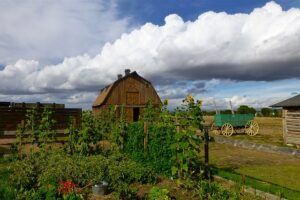 Starting a simple backyard vegetable garden, or getting some experience growing tomatoes in containers will help teach some of the little nuances of gardening that we only learn by doing. There are even options for kitchen counter top gardens that will do most of the work for us!
Starting a simple backyard vegetable garden, or getting some experience growing tomatoes in containers will help teach some of the little nuances of gardening that we only learn by doing. There are even options for kitchen counter top gardens that will do most of the work for us!
Do you have any recommendations or feedback to add to the discussion? Then comment below! I answer every comment. You can also email me at randi@fairycirclegarden.com or send me a message through social media as well!
Did you like this article? Please share it on your favorite social media page using the buttons below! Please follow us on social media for more great content, you can use the links at the top right to follow us on Facebook, Twitter, Instagram, Pinterest and Gab. Please feel free to share your gardening questions, comments, creations, pictures, and videos there. We want to create the best community for gardeners anywhere and we need you to help us grow!
Thank you so much for taking the time to read my article and spend time on my website, I am so grateful for each and every one of you!
Wishing you all the best,
Randi

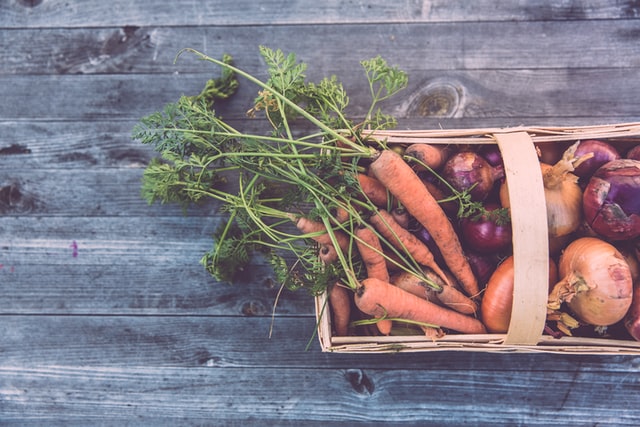
I’ve never thought that growing plants for survival is one of the great options to do when the worst-case scenario happens. I just thought that emergency preparedness means storing canned foods, freezing, etc. I realized that growing plants is even a better option. What if something bad happens and we don’t know how will it last long? What if our emergency food isn’t enough? Thanks for providing lists of vegetables viable to grow for survival and I like how you’re very specific when it comes to sharing instructions on how to grow vegetables properly (these are perfect for me as I’ve no experience growing vegetables before).
I had fun reading!
I am so glad you enjoyed the article! Yes, having at least a basic understanding of what kinds of foodstuff to grow and how can end up being the difference between long term survival and short term solutions. I am glad you got some good information from this post, and although I hope the information isn’t needed (ie, nothing horrible happens that we’d need a survival garden to survive), I am glad to have been able to help!
Many think it is difficult to grow vegetables and maintain the garden on a daily basis. Today they have a variety of techniques that make it easier for people to do gardening. It used to be a lot harder. I have my own garden and I like to grow homemade fruits and vegetables for my family.
That is so true! Necessity is the mother of invention, and with all the technological advances, there are tips, tricks and gizmos to make almost every gardening task easier than it was 100 years ago! I would love to see some of your fruits and vegetables!